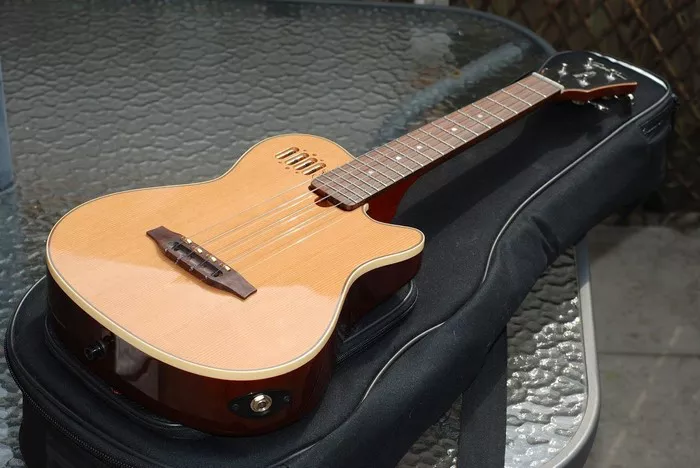The ukulele and guitar are both beloved string instruments with rich musical histories and devoted fan bases. While they share some similarities, such as their fretted necks and chord-based playing styles, they also have distinct characteristics that set them apart. The introduction of the 6 string ukulele adds another dimension to the comparison, blurring the lines between these two instruments even further.
Understanding 6 String Ukulele and Guitar
The 6 string ukulele, as the name suggests, features six strings instead of the traditional four found on standard ukuleles. This additional pair of strings expands the instrument’s range and versatility, allowing players to explore new musical possibilities and techniques. Like its four-string counterpart, the 6 string ukulele is typically tuned to G-C-E-A, albeit with an additional low G and high C string.
Similarly, the guitar is a versatile string instrument with six strings arranged in pairs of twos, tuned to E-A-D-G-B-E from low to high. It offers a wide range of musical possibilities, from strumming chords and fingerpicking melodies to soloing and improvisation. The guitar’s larger body size and longer scale length contribute to its rich and resonant sound, making it a popular choice for a variety of musical genres and playing styles.
Is a 6 String Ukulele Like a Guitar?
Given their similar string count and tuning, it’s natural to wonder if the 6 string ukulele is like a guitar. While they share some commonalities, such as their fretted necks and chord-based playing styles, there are also notable differences between the two instruments.
One significant difference is size and scale length. The ukulele, including the 6 string variation, is typically smaller in size compared to the guitar. This difference in scale length affects the instrument’s playability, as well as its overall sound and tonal characteristics. While the guitar’s longer scale length allows for greater string tension and resonance, the ukulele’s shorter scale length contributes to its bright and cheerful tone.
Another difference lies in playing technique and musical expression. While both instruments can be strummed and fingerpicked, the ukulele’s smaller size and narrower fretboard require adjustments in technique, particularly for players accustomed to the guitar. Additionally, the ukulele’s reentrant tuning, where the strings are not ordered from lowest to highest pitch, creates a unique sound that distinguishes it from the guitar.
Despite these differences, the 6 string ukulele shares some similarities with the guitar that make it an appealing option for players looking to explore new sonic territories. Its additional pair of strings expands the instrument’s range, allowing for more complex chord voicings, melodic lines, and harmonic possibilities. This makes the 6 string ukulele a versatile instrument that can bridge the gap between the ukulele and guitar worlds.
Should I Choose a 6 String Ukulele?
Whether you should choose a 6 string ukulele ultimately depends on your musical preferences, playing style, and goals as a musician. If you’re already familiar with the ukulele and looking to expand your repertoire and musical horizons, the 6 string ukulele can offer exciting new possibilities for experimentation and creativity.
Similarly, if you’re a guitar player intrigued by the ukulele but hesitant to make the switch to a four-string instrument, the 6 string ukulele could provide a comfortable middle ground. Its familiar tuning and additional pair of strings make it easier for guitarists to transition to the ukulele while still retaining some of the techniques and musical expressions they’ve mastered on the guitar.
However, it’s essential to consider the practicalities of owning and playing a 6 string ukulele. While it offers increased versatility and sonic possibilities, it also requires adjustments in technique and playing approach, particularly for players accustomed to the traditional four-string ukulele. Additionally, the 6 string ukulele’s larger size and additional strings may be more challenging to handle for players with smaller hands or those new to string instruments.
Conclusion
In conclusion, the 6 string ukulele occupies a unique position between the traditional ukulele and guitar, offering a blend of familiar and new musical possibilities for players of all levels. Whether you’re a ukulele enthusiast looking to expand your sonic palette or a guitarist curious about the ukulele’s charms, the 6 string ukulele presents an exciting opportunity to explore new musical territories and express your creativity in fresh and innovative ways.


